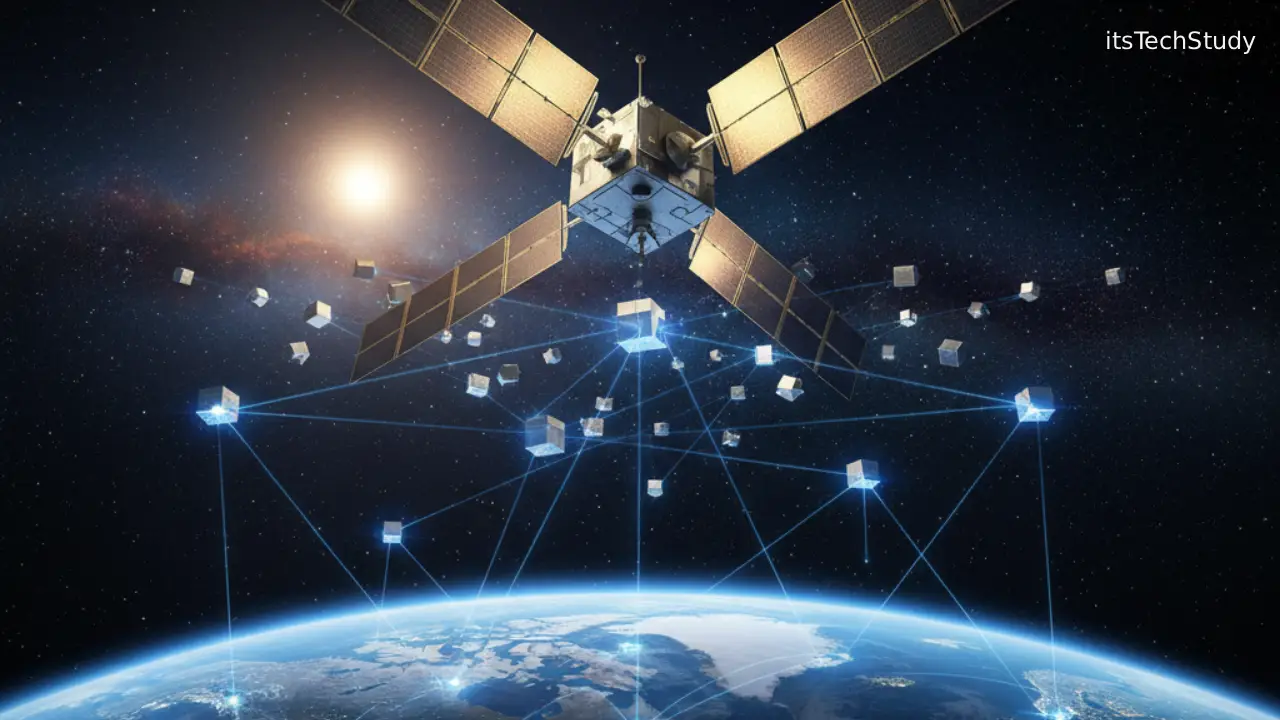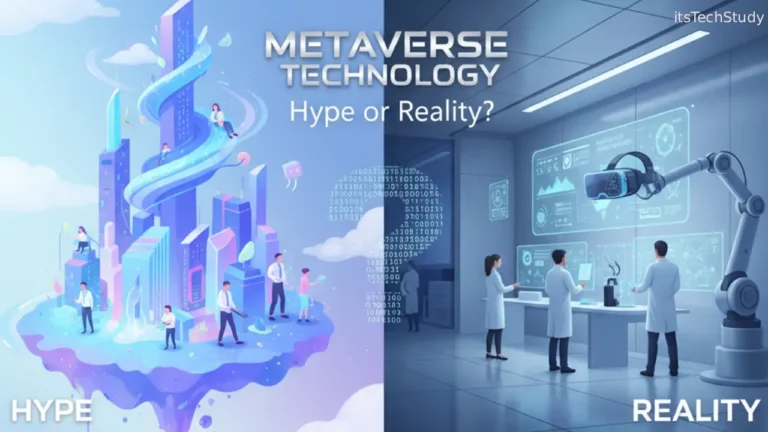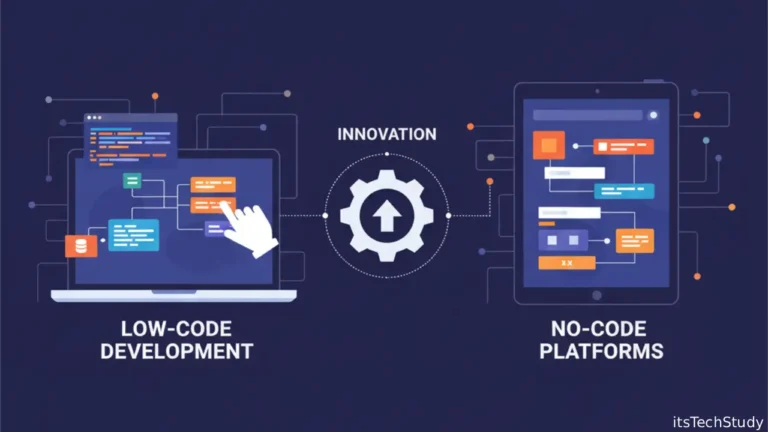Introduction: A New Era of Connectivity Beyond Earth
For decades, humanity has gazed toward the stars – not just with wonder, but with ambition. From the first artificial satellite Sputnik 1 launched in 1957 to today’s high-speed satellite constellations, space technology has evolved from a symbol of exploration to a driving force behind global communication.
In the modern world, internet access is no longer a luxury – it’s a necessity. Yet, billions still live without reliable connectivity. Traditional fiber and mobile networks struggle to reach rural or remote areas. This is where space technology and satellite internet come into play – offering the potential to deliver fast, global internet access to every corner of the planet.
Today’s satellite internet revolution, led by companies like SpaceX (Starlink), OneWeb, and Amazon’s Kuiper Project, is reshaping how we connect, communicate, and share data. But understanding this revolution requires a closer look at how space technology powers it – from advanced satellites and launch systems to data transmission and orbital networks.
What Is Space Technology?
Space technology refers to tools, systems, and innovations designed for exploration and use of outer space. It includes everything from spacecraft and rockets to communication satellites and sensors.
This field is no longer limited to government space agencies like NASA or ISRO; private companies and startups now lead much of the innovation. Technologies that once seemed futuristic – reusable rockets, satellite constellations, and autonomous spacecraft – are now driving real-world solutions for communication, navigation, and environmental monitoring.
The Rise of Satellite Internet
Satellite internet uses orbiting satellites to transmit internet data between users and ground stations. Unlike traditional internet infrastructure that relies on fiber cables or cell towers, satellite internet can reach anywhere on Earth, making it ideal for rural, maritime, and aviation industries.
Earlier generations of satellite internet were slow and expensive, mainly used by defense or maritime industries. However, with low Earth orbit (LEO) satellites now replacing older geostationary (GEO) systems, internet speeds have improved dramatically, and latency has dropped significantly.
Types of Communication Satellites
| Type | Orbit Height (Approx.) | Latency | Main Use |
|---|---|---|---|
| LEO (Low Earth Orbit) | 500–2,000 km | 20–40 ms | Broadband internet, Earth observation |
| MEO (Medium Earth Orbit) | 2,000–35,000 km | 70–150 ms | Navigation systems (GPS, Galileo) |
| GEO (Geostationary Orbit) | 35,786 km | 500+ ms | TV broadcasting, weather monitoring |
LEO satellites are driving today’s satellite internet revolution due to their low latency, faster data speeds, and global coverage through large constellations.
How Space Technology Powers Satellite Internet
1. Advanced Satellite Design
Modern satellites are smaller, lighter, and smarter. Equipped with AI-driven onboard systems, they can automatically adjust position, optimize power use, and communicate seamlessly within large constellations.
2. Reusable Rockets
SpaceX revolutionized space travel with reusable rockets like Falcon 9, drastically reducing launch costs. This made it economically viable to deploy thousands of satellites.
3. Laser Communication Links
New systems use laser-based inter-satellite communication, allowing data to travel faster in space than through ground-based relays, minimizing delays and improving reliability.
4. Ground Infrastructure
Ground stations equipped with phased-array antennas receive and transmit data to satellites, forming a critical part of the global satellite internet ecosystem.
Benefits of Satellite Internet
Pros
- Global Coverage: Provides internet access to remote or underserved areas.
- Fast Deployment: No need for cables; can connect new regions quickly.
- Disaster Resilience: Remains operational during natural disasters or power outages.
- Technological Advancement: Encourages innovation in AI, space systems, and hardware design.
Cons
- High Initial Costs: Launching and maintaining satellites is expensive.
- Weather Sensitivity: Signals can weaken during heavy rain or storms.
- Space Debris Risks: Increasing satellite numbers can clutter orbits.
- Limited Bandwidth per User: Capacity can reduce in densely populated regions.
Key Players in the Satellite Internet Revolution
| Company | Project Name | Primary Focus | Status |
|---|---|---|---|
| SpaceX | Starlink | Global LEO satellite internet | Active, expanding rapidly |
| OneWeb | OneWeb Network | Broadband for remote regions | Operational with global rollout |
| Amazon | Project Kuiper | Consumer internet service | Launches starting soon |
| China SatNet | Guowang | National satellite internet initiative | Under development |
| Telesat | Lightspeed | Business-focused connectivity | Planned for 2026 |
These projects aim to connect every corner of the globe, reducing the digital divide and fostering opportunities in education, healthcare, and remote work.
Applications of Space Technology and Satellite Internet
1. Global Connectivity
Rural schools, hospitals, and small businesses gain access to high-speed internet, enabling online education, telemedicine, and e-commerce.
2. Smart Agriculture
Farmers use IoT sensors connected via satellite networks to monitor crops, weather, and soil, improving yield and reducing waste.
3. Environmental Monitoring
Satellites track deforestation, ocean temperatures, and pollution, providing vital data for climate change research.
4. Defense and Disaster Response
Satellite internet supports real-time communication in war zones or disaster-hit areas where ground networks are unavailable.
5. Space-Based IoT
Low-power devices in remote locations – from shipping containers to weather buoys – connect via satellite networks for tracking and analytics.
Challenges Facing the Satellite Internet Revolution
Despite its potential, satellite internet faces several challenges:
- Space Debris Management: Thousands of LEO satellites increase collision risks.
- Spectrum Allocation: Managing frequencies among multiple players is complex.
- Affordability: Subscription costs can be high for users in developing nations.
- Environmental Concerns: Launch emissions and orbital debris raise sustainability issues.
- Regulatory Barriers: Different countries have varying rules for satellite operations.
To overcome these, global cooperation and innovation in space governance and debris mitigation are essential.
Future of Space Technology and Satellite Internet
The next decade will see unprecedented growth in space-based communication. Innovations like quantum communication, AI-driven satellite management, and 6G integration will redefine global connectivity.
We may also witness interplanetary internet networks, where satellites relay data between Earth, the Moon, and Mars – enabling seamless communication for future space missions.
Governments and private companies are expected to collaborate more closely, ensuring secure, sustainable, and affordable access for all. The dream of a truly connected planet is no longer science fiction – it’s becoming today’s reality.
Conclusion: The Sky Is No Longer the Limit
Space technology and satellite internet are redefining the limits of connectivity. From empowering remote communities to fueling the next wave of digital transformation, these innovations are laying the groundwork for a truly interconnected planet.
As reusable rockets reduce costs, AI improves efficiency, and global collaboration grows, satellite internet will soon become as common as mobile broadband – bridging digital divides and opening doors to a smarter, more inclusive future.
The revolution has already begun – and it’s orbiting right above us.
FAQs About Space Technology and Satellite Internet
Q1: What makes satellite internet different from traditional broadband?
Ans: Satellite internet doesn’t rely on cables or towers. Instead, it uses satellites orbiting Earth to transmit data wirelessly, making it accessible anywhere, even in the most remote regions.
Q2: Is satellite internet as fast as fiber internet?
Ans: Modern LEO-based systems like Starlink offer speeds comparable to fiber (100–250 Mbps) with lower latency than older GEO systems, though fiber remains faster in urban areas.
Q3: Can weather affect satellite internet performance?
Ans: Yes. Heavy rain, snow, or storms can slightly degrade signal quality, though new technologies are improving weather resistance.
Q4: How much does satellite internet cost?
Ans: Prices vary by provider. Starlink, for example, charges around $110/month in many regions, with hardware costs around $500–$600.
Q5: Are there environmental risks from so many satellites?
Ans: Yes. The growing number of satellites increases space debris risks. Organizations like NASA and ESA are developing guidelines for deorbiting old satellites safely.
Q6: Will satellite internet replace traditional networks?
Ans: Not entirely. It will complement terrestrial networks by filling gaps in coverage, especially in rural or hard-to-reach areas.












No Comments Yet
Be the first to share your thoughts.
Leave a Comment